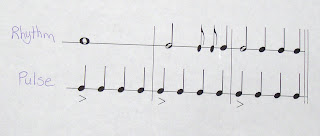Y-Stick Tambourine
Materials Needed:
1. Dried Y stick
2. 12 metal bottle caps
3. Spray paint (any color)
4. Strong wire
5. Hammer
6. Nail
7. Decorations (e.g. feathers, beads.)

Instructions:
1. Peel the bark off the Y stick and paint the stick.
2. Cook the bottle caps on an out-door grill for 5 minutes (just until the bottle caps get hot, this step helps to remove the rubber liner inside the bottle caps.)
3. Remove the rubber liners in the bottle caps
4. Flatten out the bottle caps with a hammer.
5. Poke a hole through the bottle caps with a nail.
6. Cut the wire for the Y-stick
7. Thread the bottle caps onto the wire.
8. Tautly string the wire between the arms of the Y-stick.
9. Have fun!
This great craft idea is from familyfun.go.com.

 Yuval Ron Ensemble: Middle Eastern Music
Yuval Ron Ensemble: Middle Eastern Music Intersections: ADT & James Sewell Ballet
Intersections: ADT & James Sewell Ballet
































 WFMW
WFMW














